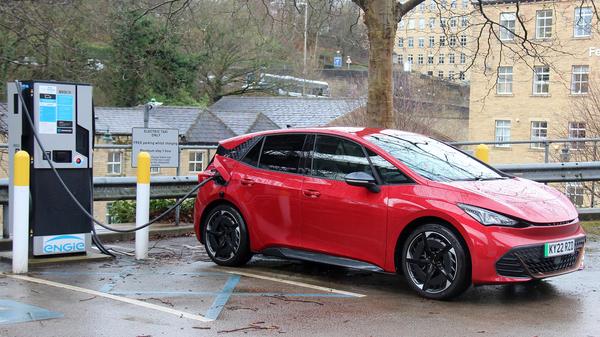Long Term Review
Living with a… Cupra Born (Final report)
The Cupra Born presents as a more exciting twist on the VW ID.3 and the first electric hot hatch – we’re living with one to see if it delivers on both
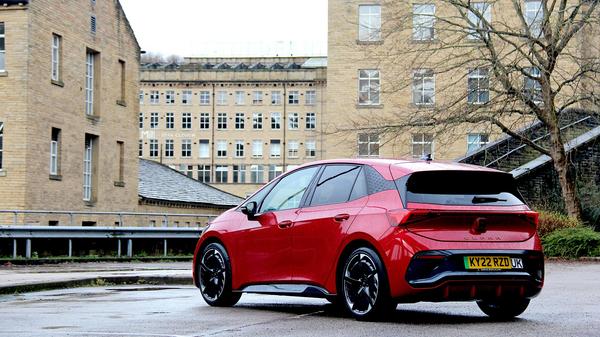

Words by: Dan Trent
Published on 14 March 2023 | 0 min read
Cupra’s role is to put a snazzier, Spanish twist on the sensible pants German-engineered foundations it takes from Volkswagen, which in the Born’s case include the pure electric ‘MEB’ platform shared with cars like the VW ID.3, Skoda Enyaq, Audi Q4 E-Tron and others. This builds on Seat’s long history of doing the same with previous generations of internal combustion powered VW product, Cupra evolving from its sporting trim line into a standalone brand with its own dedicated models. Like the Golf-based Cupra Leon, the Born arguably takes the best bits from VW and spices them up with a bit of Mediterranean flair while delivering impressive bang for buck into the bargain. It certainly looks funkier than the ID.3 on which it is based and wears its sporting heart on its sleeve, while first impressions from our initial drive out in Spain showed promise. Is this really the first bona fide electric hot hatch, though? We’ve got six months to find out.
Skip to: Month 1 – What’s the Spanish for ‘electric car’? Month 2 – Guilty as charged Month 3 – A family affair Month 4 – If you’re appy and you know it Month 5 – Racing stripes Month 6 – Less range, more Cupra? Final report – A Spanish EV epiphany
Skip to: Month 1 – What’s the Spanish for ‘electric car’? Month 2 – Guilty as charged Month 3 – A family affair Month 4 – If you’re appy and you know it Month 5 – Racing stripes Month 6 – Less range, more Cupra? Final report – A Spanish EV epiphany
What is it?
- Model: Cupra Born
- Version: 230PS e-Boost (77kWh)
- Spec level: V3
- Options fitted: Tech Pack L (£740), metallic paint £565
- Price as tested: £43,280
We like
- Looks sharp
- Stylish interior
- Fast, sporty and refined
We don’t like
- Wobbly infotainment system
- Intrusive driver aids
- Touch-sensitive controls
Month 1 What’s the Spanish for ‘electric car’?
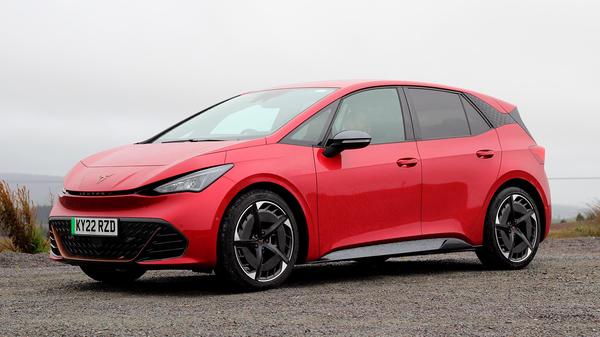
Mileage: 802 (on delivery)
Efficiency: 3.9 miles per kWh (trip computer average for loan period to date)
I’ve long been a fan of Cupra versions of the Seat Leon, on the basis they always seemed cooler, faster and better value than the VWs on which they were based. Put it this way, if you’d ever asked me to choose between a Cupra Leon or Golf GTI the Seat would always have got my vote.
Does the same apply for the electric age? Well, VW doesn’t offer a GTX version of the ID.3 as it does with the VW ID.4 and ID.5, or at least doesn’t yet. And the related Enyaq and Audi Q4 E-Tron play to different audiences again. So, for now, the Born is the sportiest twist on the VW’s MEB electric foundations. And, yes, apologies for falling back on industry jargon but it’s important buyers understand how closely related some of these products are, even if the brands selling them are very different in spirit.
To explain, MEB is like a big, modular Lego set of batteries, motors and other components the engineers at Cupra, VW, Audi and Skoda can choose from to build anything from a Born to an ID.Buzz. So, ‘my’ Born has the bigger of the available batteries but power to the rear wheels only, rather than all four as seen elsewhere in the wider MEB family. As a top of the range V3 with the e-Boost function it has 231 horsepower, which is about the same as the turbocharged 2.0-litre petrol engine powering the Cupra Leon of a few generations back I used to run. An interesting comparison, though at nearly two tonnes the Born weighs at least a third more than that car, so I’m tempering my expectations accordingly.
The three-step range structure of the Born is straightforward, V1 already generously equipped with a connected and fully digital cockpit, sports seats, LED headlights, four driver modes, rear view camera and – of course – lots of Cupra’s signature bronze trim. Which looks lovely. V2 gets heating for the front seats and the nifty ‘augmented reality’ head-up display, while this V3 gets 20-inch wheels, power adjustable seats with massage function (likely to be welcome on those long schleps up and down the M1) and smart synthetic suede upholstery. The only options fitted are the rather lush metallic Rayleigh Red paint that goes very nicely against the aforementioned bronze trim and pale grey interior, plus the ‘Tech Pack L’ with wireless phone charger, intelligent vehicle networking (whatever that is) and automated parking assist. One quirk of the bigger battery model I’m running is that it’s a strict four-seater, the central position on the rear bench replaced with shallow storage tray, which may limit practicality for families compared with most rivals.
Other than that, I like the way it looks. And it’s got all the kit I could wish for. But this will be my first time living with an electric car as my main means of transport. My experiences of depending on the charging infrastructure haven’t been too favourable thus far, so I’m glad I can now plug in at home. But I tend to rack up big mileages, so I’ll still be reliant on the public charging network while out and about. So, this will as much be a test of whether an electric car works for me at all as it is whether the Born is a good one or not. Much to consider.
Back to top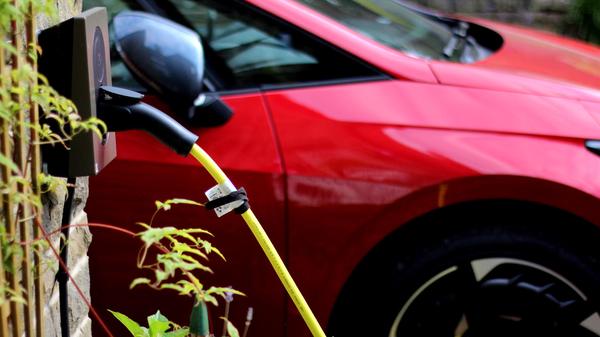
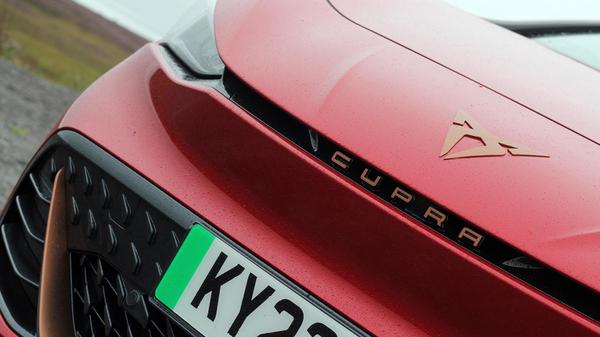
Month 2 – Guilty as charged

Mileage: 2,584
Efficiency: 3.8 miles per kWh (trip computer average for loan period to date)
From the outset with the Born I’ve been interested to see if it stands up as the ‘hot’ option in the family of cars from VW, Audi and Skoda built on this common MEB platform. A drive to and from my mum’s in North Wales on some of my favourite roads was just the opportunity to find out.
Like many designed as pure electric models from the start the Born combines a low-slung battery pack with a motor at the back powering the rear wheels. This return for rear-wheel drive wasn’t on my bingo card for the bold electric future we now find ourselves in but, for a keen driver, should be good news. I’ll try not to get too ‘roadtester’ about this but leaving the front wheels to do the steering while power comes from the rear is traditionally the best combination for fun handling, this combined with a battery under the car for lower centre of gravity seemingly the dream combo.
My private car is a rear-wheel drive Mazda MX-5, so I’m well used to this balance. But Cupra, and its VW owners, realise for generations of drivers raised on front-wheel drive hatchbacks this is going to be a big culture shock for many. So, although there is a more relaxed stability control setting on the Born, don’t expect every wet roundabout to be a drifting display. Which is probably for the best. Indeed, the leash is very tight indeed but there’s just a sniff of that rear-driven balance I appreciate, and it’s a fun novelty in a mainstream modern car.
And I enjoyed my drive across Wales in it. Though, if I’m being fussy, the ‘hot’ promise was cooled by a near two-tonne kerbweight, which is more SUV than hot-hatch. Acceleration up to 60mph or so is suitably effortless in that electric way. But beyond that it tails off significantly, which can limit those overtaking opportunities when encountering a slow-moving campervan or farm vehicle on a twisty Welsh A-road.
Back in the real world a trip to London was a chance to explore whether the Born really can stand me for the regular trips up and down the M1 that are a part of my normal routine. Answer? Just about. Leaving friends with 220 miles to home and 295 miles showing on the range meant a comfortable 75 miles in hand and no range anxiety. Or so I thought. But even using the speed limiter to hold me at 65mph that buffer was dropping constantly, and even nursing it for the final stretch saw me limp home with just 35 miles left. Worrying on a warm summer afternoon. What it’ll be like in the depths of winter remains to be seen.
Back to top
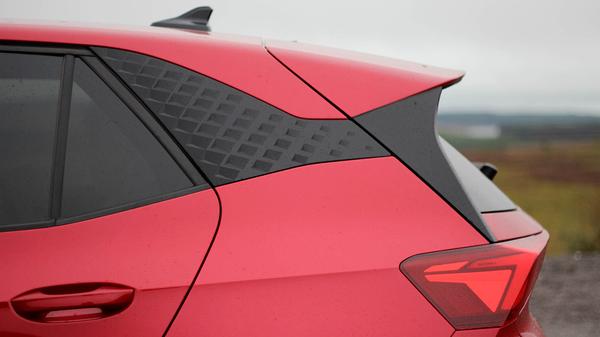
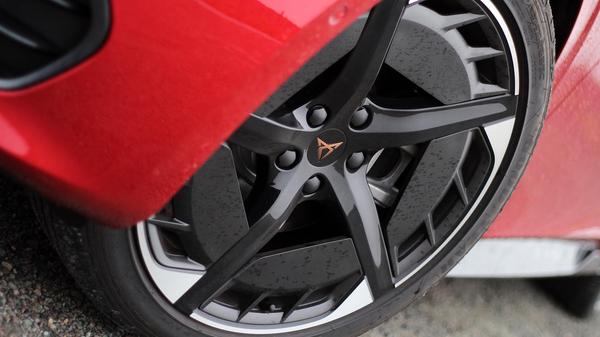
Month 3 – A family affair

Mileage: 3,375
Efficiency: 3.8 miles per kWh (trip computer average for loan period to date)
The observant will realise the car in the picture above isn’t ‘my’ Cupra Born but its Skoda Enyaq brother instead. And, yes, the same camper version Erin borrowed recently.
Why talk about it when I’m meant to be reviewing the Born? Well, as mentioned before, both are built with the same VW-supplied MEB ‘toolkit’, so share a battery, motor and much of the software powering the bits you interact with day to day. I’d not actually spent much time in an Enyaq before and, with accommodation required for a bike race in the North York Moors, this was a good chance to see how the two compare.
When two cars share so much underneath the differences really leap out. Most obviously the Enyaq feels like a big SUV, the Born more like a conventional mid-size hatchback. On the road I liked the Skoda’s addition of adjustable regenerative braking on the steering wheel paddles as you get on the (also related) Audi Q4 E-Tron, on the basis I’m a constant fiddler and it gives me something to do given now I don’t have gears to shift any more. In the Cupra it’s just D or the more assertive B mode, which I flit between quite a lot depending on the kind of road I’m on.
I also liked the Skoda’s retention of physical buttons for stuff like ventilation or driver modes. Speaking of ventilation, I also appreciated the fact that in the Enyaq you can run the fan and have some degree of temperature control but leave the air-con switched off to preserve range. In the Cupra it’s air-con or nothing, meaning the choice between being cold/stuffy or another 20 miles of range. Which can be the difference between getting home or stopping for another charge.
Mind you, there’s no getting around the fact the Cupra looks a lot funkier inside and out than the Skoda, which is kind of to be expected. The graphics seem sharper, clearer and just fresher, even if the operating system behind them is familiar.
Efficiency comparisons aren’t really fair on the Skoda given the tent on the roof and all the other extra kit inside but it was interesting to see how much further the Cupra goes on the same battery, even with the extra performance of the e-Boost system. On this showing I’d be reasonably confident going 250 miles on a full ‘tank’ in the Born, maybe 200 or so in the Skoda. Both some way short of the 300-plus claimed, it has to be said.
Back to top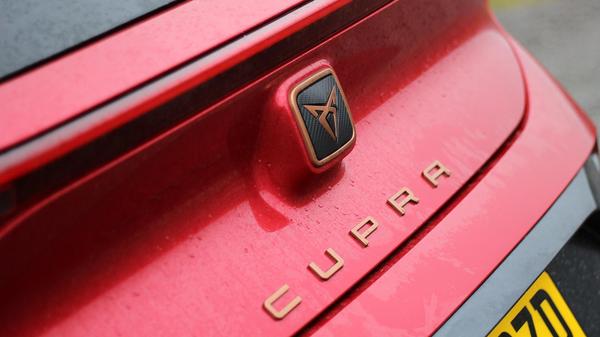
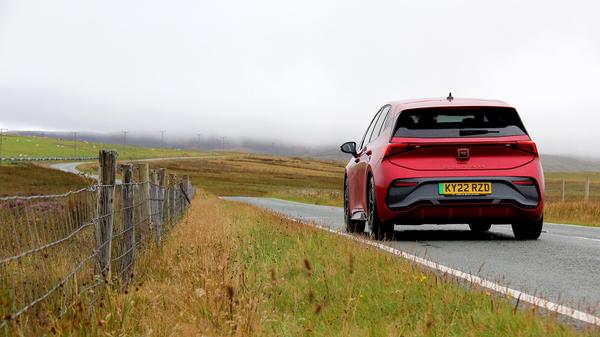
Month 4 – If you’re appy and you know it

Mileage: 4,981
Efficiency: 3.7 miles/kWh (trip computer average for loan period to date)
Connectivity is the next big thing in onboard tech, with all manufacturers pushing the benefits of always-online cars. For them it means lots of valuable data about how cars are being used, the lifespan of certain components, whether you need a service or – more recently – the ability to sell owners ‘upgrades’ through paid-for subscription services or downloadable functionality. You may have heard the one about BMW charging to ‘unlock’ your heated seats but manufacturers across the board are gearing up to do the same.
At a day-to-day level we’re all being encouraged to connect to our cars via phone apps, ostensibly for interacting with them remotely while also generating tons of useful data for manufacturers. I’ve rarely bothered with this on short-term press car loans because it’s a faff of registrations, passwords and all the rest but a long-term test like this is the perfect opportunity to see if it’s worth it. And especially important with an electric car like the Born where you want to control charging times to only draw power in off-peak electricity periods or ‘pre-condition’ the car so the battery and cabin are up to temperature before you unplug and set off. The latter obviously creates a more pleasant driving environment (there’s nothing more satisfying than getting into a warm car with its windows already defrosted on a cold morning!) but also means the battery starts the journey at its correct operating temperature, helping range. I’ve also been able to freak my wife out by remotely switching the heated seats on when she’s out and about, though she thanked me when I did so on one particularly cold day recently.
Like anything, though, some apps are better than others. And while the Cupra’s looks snazzy and has nice graphics the menus and timetabling for charging and air-con seem unnecessarily complicated. I thought it was just me but, totally unprompted, another journo running a Born said the same when we were comparing notes. I’m also now terrified that a forgotten charging schedule might have me coming down expecting a warm and fully charged car only to find it stone cold and having unplugged itself due to some forgotten ‘routine’ I set previously.
Then the app changed the colour of the car in the avatar to blue rather than red, which seems petty but was really annoying. It’s since gone back to red, thankfully. As you'll see from the pic above it also went through a spell of getting confused between kilometres and miles but that also seems to have been resolved. So, it’s improving along the way.
There are other functions I’ve yet to try out, like looking up charging stations on the map feature and then sending the route to the vehicle for when I start driving. But, frankly, I already spend too much time looking at my phone anyway. Something to try, though.
Back to top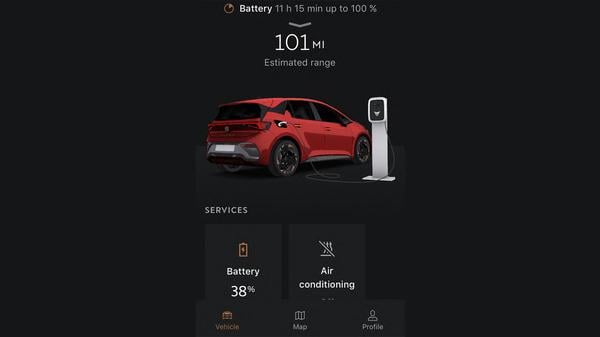

Month 5 – Racing stripes
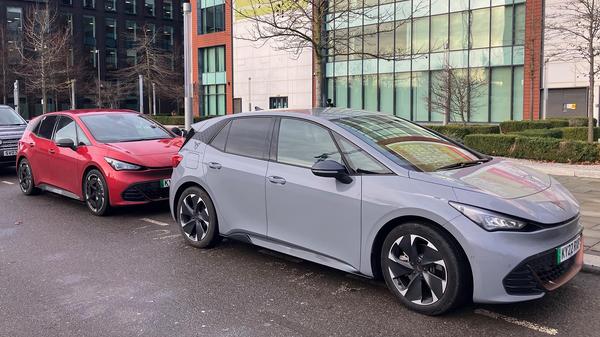
Mileage: 5,020
Efficiency: 3.6 miles/kWh (trip computer average for loan period to date)
The observant among you will have noticed ‘my’ Cupra has changed from red to grey this month, though my face is still bright crimson at the reason for this. Short version, I was backing up under a car port and carefully watching the clearance between the wooden pillars in the mirrors. What neither I nor the 360-degree parking sensors had spotted, however, were the concrete blocks lower down, one of which ground a racing stripe along the bottom edge of the nearside doors.
While the fault is mine and I should have looked before backing up this is an interesting demonstration of how over-reliance on electronic gizmos is no substitute for awareness of your surroundings. My assumption the sensors would squawk if I was too close to an obstacle made me complacent. And, when they didn’t, I ended up damaging the car. If I’d only looked first rather than relying on the radar I’d have known…
I’m not washing my hands here, but this does rather vindicate my fear we’re all getting a bit too reliant on sensors and cameras at the expense of actually looking where we’re going, whether it be when parking, changing lane on the motorway or even applying the brakes ourselves when the car in front slows. The tech is good. But it’s not infallible, despite the implication by manufacturers you can effectively pay to delegate awareness of your surroundings by opting for cost option ‘driver assistance packages’ of varying complexity. Worth remembering ultimate responsibility still lies with the driver, that agonising scraping noise my rather unpleasant reminder of the fact.
Out of adversity comes opportunity, though. And while the red Born is off for repair I’ve got a lower-spec V2 one to try with the smaller battery but same 231 horsepower E-Boost motor. Officially this cuts the best-case range from 335 miles to 263 miles, in reality this equating to a real world operating radius of 180 miles rather the 230 I’d be comfortable doing with the bigger battery. Given my typical long-distance run from home to Heathrow is about 200 miles this could get interesting. Or, depending on the whims of the public charging infrastructure, a complete pain. Given the number of inoperative GridServe chargers at M1 service stations on a recent run south this could be a worry, though on the flipside I’ve recently tested Tesla’s invitation to let owners of other EVs to plug in at selected Supercharger sites and found the experience slick, if expensive. More charging options can only be a good thing, though.
One benefit of the smaller battery is a proper three-seat rear bench, so this Born can carry five people rather than the four of the red one. Which is handy. It’s also about 10 per cent cheaper, like for like. Given it’s a bit lighter as well (122kg to be precise) it should feel more lively, though I haven’t yet driven it on the kind of road where that might be an advantage. In the meantime I’m missing my fancier massage seats and some of the other trimmings from the V3 spec but, if not how I’d chosen to do so, I’m appreciating the opportunity to compare the two back to back.
Back to top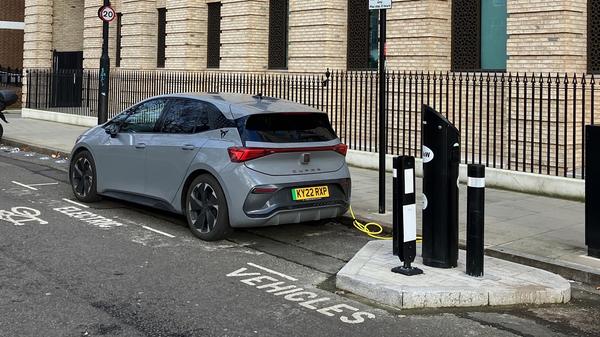
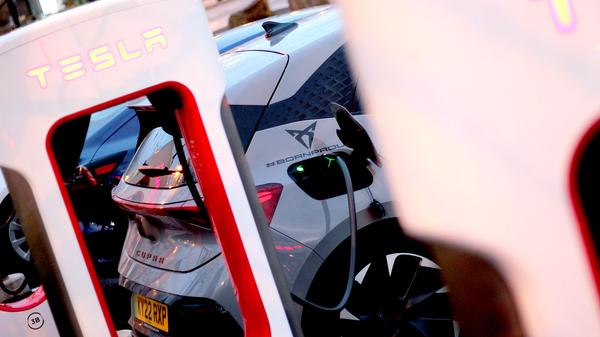
Month 6 – Less range, more Cupra?
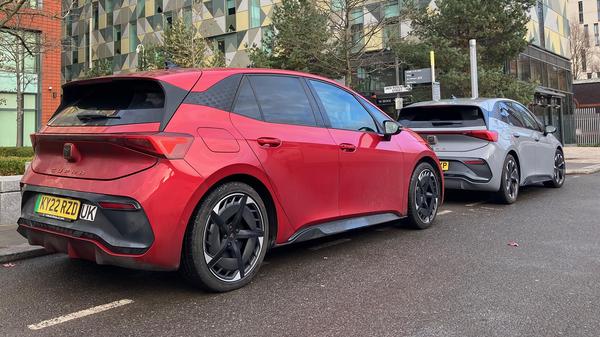
Mileage: 6,245 (red car)
Efficiency: 3.5 miles per kWh (trip computer average on red car for loan period to date)
So, after my minor bodywork alterations ‘my’ red Born is restored to its former glory and back with me after my swap into the grey one with the smaller battery. This was an interesting comparison, given unlike ‘my’ 77kWh version it wasn’t seemingly capable of doing my regular 200-mile run south without stopping for a charge. Thankfully this didn’t turn out to be the problem my previously more range anxious self would have thought.
Indeed, the more time I spend running an EV the more chilled out I’m becoming about range, infrastructure and all the other ‘stress points’ you might encounter when considering the switch out of a petrol, diesel or hybrid. My fortunate ability to charge at home is a huge part of that, and even though my Zaptec point isn’t delivering the full 7.5kW it should (blame Victorian wiring and infrastructure supplier Northern Powergrid’s failure to sign-off on that, meaning I only get about 4.5kW) I’m confident I can just top up when I need to. And, unless I’m doing a big trip, it’s noticeable how rarely I actually do that, even with the smaller battery.
Decent efficiency plays a big part in this, both Borns delivering a comfortable 3.5 miles per kWh even in the middle of winter. Turns out mental arithmetic is all part of EV ownership and figuring out how far a car will actually go (as opposed to the manufacturer’s claimed range) is a case of multiplying the battery size by that average efficiency. So, for the grey car that’s 3.5 times 58kWh, or 203 miles, and in the red one 3.5 times 77kWh, or 270 miles. Just like internal combustion cars some EVs are more efficient than others and the Toyota bZ4X-derived Subaru Solterra I had on test the other week was struggling to achieve two miles per kWh. Which goes to show a bigger battery isn’t always the answer, and efficiency should be at least as big a consideration when you're comparing electric cars to buy.
As I get smarter with my charging I was able to go about my business with the smaller battery without any real inconvenience, a friend who’s buying a Born himself choosing this model for the fact it gets the full three-seat rear bench that he needs for ‘dad’s taxi’ duties. That, for most people, will be more useful than a bit more range and the two-seat rear of ‘my’ car due to the bigger battery. But I’ll confess I’m glad to have it back, as much for the slightly fancier interior trim and massage seats on ‘my’ V3 trim level as anything.
And like that six months is nearly up and it’ll soon be time for the Born to go back. But, before that happens, I have a fun final mission for it, more on which next time…
Back to top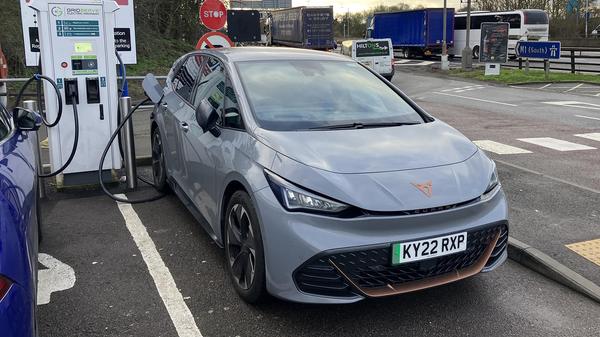

Month 7 - A Spanish EV epiphany
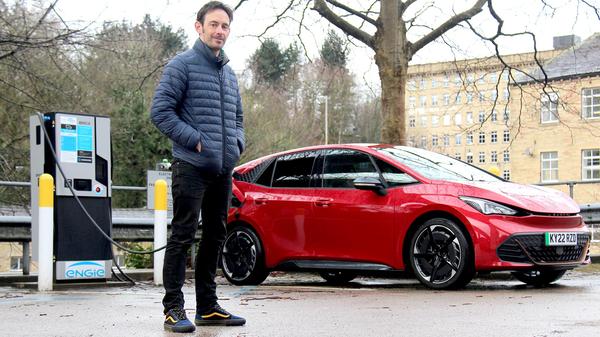
Mileage: 6,806
Efficiency: 3.4 miles per kWh(trip computer average for loan period to date)
I’ve run all sorts of cars on long-term test over the years, ranging from the frankly boring to the genuinely exotic. But this Cupra Born may be the most important, given I’ve gone from electric car sceptic to electric car convert over the six months I’ve had it.
It helps I’m lucky enough to have off-street parking and a Zaptec supplied charger on my house. But that doesn’t help you when you’re 200 miles from home, and my previous experiences of the public charging network had me worried, given my usual travel patterns include regular 400-mile round trips up and down the M1. Six months and nearly 7,000 miles later I feel way more relaxed.
For starters the worry that charging stops are all about 40-minute waits to get your battery up to 80 per cent doesn’t reflect reality, and as long as you have enough to get you to your next destination a quick top-up while you stop for coffee and a comfort break is usually enough. And you’d be doing that anyway.
My range anxiety also calmed when I realised the distance the car reckoned it could do wasn’t necessarily the whole story, and efficiency was perhaps the more important calculation on long trips. For instance, the other day I set off from home with 100 per cent battery for a 210-mile journey but only 185 miles showing. But I wasn’t stressed, some quick mental arithmetic reassuring me I’d make it with range to spare.
All you need to remember is that kWh in the battery are the litres or gallons of fuel in the tank of your internal combustion car. So, miles per gallon becomes miles per kWh. Taking the Born as an example if you’re banking on 70kWh of the 77kWh battery as your usable reserve and the car is doing 3 miles/kWh then your true range calculation is three times 70kWh, or 210 miles. Over my six months the Born was rather more efficient, with a total average of 3.4 miles/kWh, even through winter. This is genuinely impressive, and a lot better than I’ve seen from the VWs, Skodas and Audis using the same ‘MEB’ electric platform. So, in that example of setting off for a 210-miles journey with 185 miles of range showing even my rusty maths told me if I could maintain that kind of efficiency I’d make it with 40 miles to spare. Which is exactly how it played out.
Watching my efficiency also taught me using the air-con wasn’t the disaster the range predictions suggested, either. At first seeing my range plummet by 20 or 30 miles for trying to clear the windscreen induced panic, but when I realised my actual miles/kWh figure remained steady once the car was warmed through and I could actually drive without shivering or squinting through fogged up windows my quality of life improved immeasurably!
Over the six months I got less stressed the public infrastructure as well, learning that for all my snobbery McDonald's was often a better shout for charging than busy motorway services. I still hate the food but have learned to tolerate the coffee. And if I did find myself somewhere new the maps app on my iPhone could direct me to nearby options while on the move through the wireless CarPlay. Always having a plan B (and possibly C) for your charging is sensible too, so if you turn up at a services and the terminals are busy or out of order (both common) you know you have enough to press on to the next one. Or the one after that.
Most of all I loved the car. Sure, it’s fundamentally similar to the VW ID.3 on which is based but I think the Cupra looks better with its sharper lines and bronze trimmings, the stylish interior had nice materials in all the touchy-feely bits and even the much-maligned VW infotainment system was better than I expected. It was a little slow firing up a couple of times but, against the horror stories I’ve heard, I had no real issues. The lack of backlighting for the volume and heating controls and the multi-purposed window controls were among the ‘user experience’ irritations I never got over, though. And ones common to nearly all the Cupra, VW, Skoda and Audi cars sharing the MEB platform. So, we can blame VW for that.
Overall, though, I really enjoyed my time with the Born. I even tested my original theory of it being a proper electric hot hatch by taking it to a track day, where it was way more entertaining than expected.
In more everyday scenarios my EV experience thus far has felt like a game of snakes and ladders, but my six months with the Cupra involved more short cuts than slithers. It also gives me a very good yardstick by which to measure all the other electric cars I’m testing, and going by the number of Borns I’m now seeing around it looks like I’m not the only one to appreciate its strengths.
Back to top
